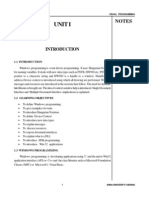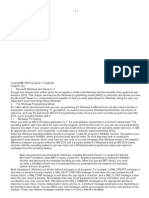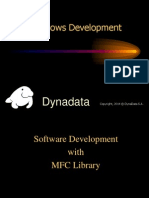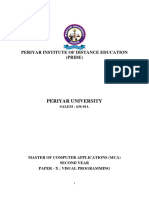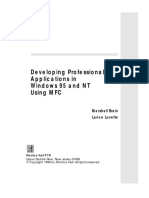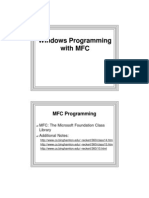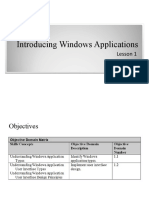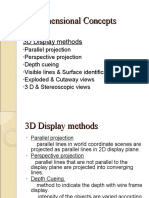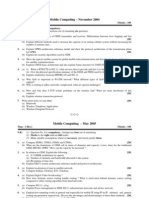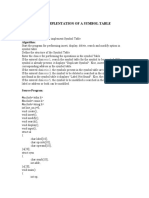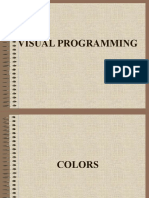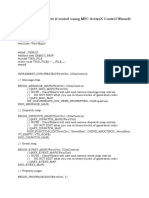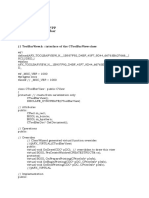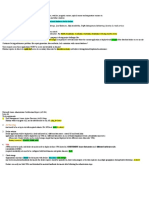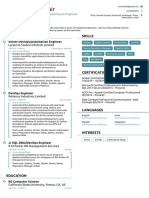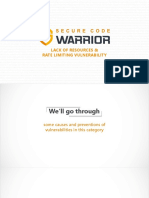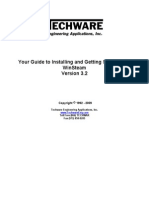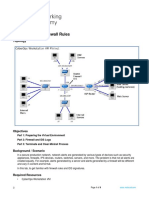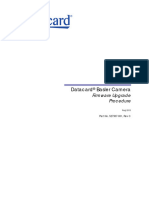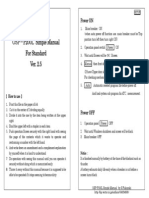0% found this document useful (0 votes)
100 views24 pagesIntroduction To Visal Programming
Visual programming deals with the graphical user interface (GUI) front end and connecting it to backend applications. It uses windows to display output and receive user input. Visual programming tools like Microsoft Foundation Classes (MFC) and application wizards make developing window applications easier by providing predefined classes and templates. MFC classes derive from base classes like CWnd to provide window functionality. Controls, dialogs, and documents can be dragged onto windows to add interactivity. ActiveX controls allow reusable components to be inserted into applications and web pages.
Uploaded by
michael.ferrarisCopyright
© Attribution Non-Commercial (BY-NC)
We take content rights seriously. If you suspect this is your content, claim it here.
Available Formats
Download as PPT, PDF, TXT or read online on Scribd
0% found this document useful (0 votes)
100 views24 pagesIntroduction To Visal Programming
Visual programming deals with the graphical user interface (GUI) front end and connecting it to backend applications. It uses windows to display output and receive user input. Visual programming tools like Microsoft Foundation Classes (MFC) and application wizards make developing window applications easier by providing predefined classes and templates. MFC classes derive from base classes like CWnd to provide window functionality. Controls, dialogs, and documents can be dragged onto windows to add interactivity. ActiveX controls allow reusable components to be inserted into applications and web pages.
Uploaded by
michael.ferrarisCopyright
© Attribution Non-Commercial (BY-NC)
We take content rights seriously. If you suspect this is your content, claim it here.
Available Formats
Download as PPT, PDF, TXT or read online on Scribd
/ 24

